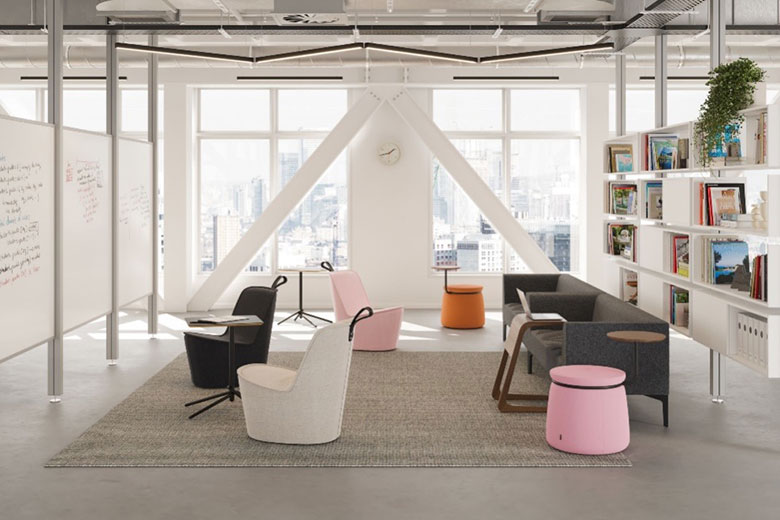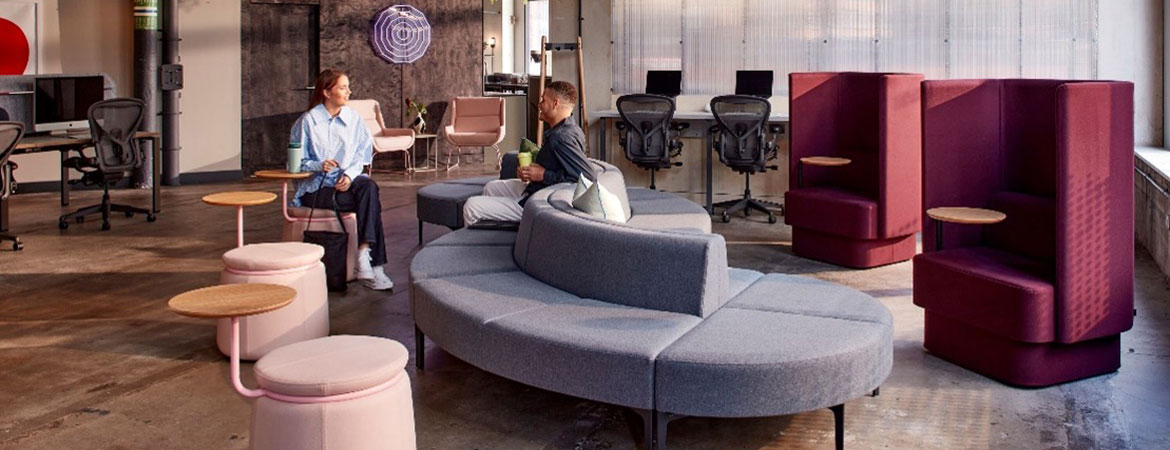How innovative furniture solutions are shaping the future of office design
The landscape of the modern workplace is ever evolving what we require of the spaces we work in is shifting in the face of economic, geopolitical, and technological change. Furniture is too. No longer confined to open-plan paradigms, furniture has become far more adaptable and purpose-driven, able to meet the constantly changing day-to-day needs of humans at work.
At MillerKnoll, we believe that ‘work’ is best done when people feel connected, when their wellbeing is supported, and when organisations are ready to adapt to change as it happens.
Fostering connection
The workforce is increasingly distributed, with a mix of hybrid working arrangements, remote teams, and clients. But humans need connection; it’s what creates a sense of community, it supports collaboration (and therefore better ideas and greater efficiency). Plus, it also creates a sense of belonging. Innovative and modular furniture solutions play a pivotal role in cultivating an environment where connection thrives—whether that’s casual interactions, team meetings, video conferencing, or private conversations.
The Symbol seating range from British brand NaughtOne, a member of the MillerKnoll collective, does exactly this. It offers myriad opportunities for connection, such as inviting waiting areas, team meetings, or spontaneous ideation.
Also, part of the MillerKnoll collective is Muuto, and the Scandinavian brand’s Wrap Lounge Chair also sets the scene for connection. Wrap’s blanket-like textile upholstery establishes deep comfort and offers the perfect backdrop for intimate conversations.

Prioritising wellbeing
Employee wellbeing is no longer just a ‘nice-to-have’—it’s a strategic imperative. It’s become clear that healthier teams work better, and that organisations flourish as a result. And this is where innovative furniture solutions prove to be the ultimate support team, naturally championing health.
Ergonomically designed chairs, adjustable desks, movable monitor arms like the Flo X Monitor Arm from Colebrook Bosson Saunders, and sit-to-stand workstations are all examples of innovative solutions in the workspace that support physical wellbeing. These are crafted specifically to alleviate physical strain and promote proper posture. Sit-to-stand desks also promote regular movement, such as Ratio by Herman Miller.

Wellbeing, however, isn’t just about physical support; it’s also about creating an environment that actively promotes a sustainable and environmentally friendly space. NaughtOne is known for their sustainable products, recently winning the SEAL Sustainable Product Award. Take the Pippin Chair, for example. It is built with longevity in mind, using natural materials, and can be easily disassembled and repurposed at the end of its life.

Embracing change
Adaptability is a cornerstone of success in today’s rapidly evolving business landscape. After all, it’s much easier for humans to respond to changing circumstances—and to take risks—when the environment they work in is fully equipped for that change and ready to support it. This is where innovative furniture solutions are really making their mark, shaping the future of work and workplace design by creating settings that are naturally versatile.
Let’s look first at movable walls and partitions. They facilitate the creation of discreet offices and meeting rooms in moments. The OE1 Agile Wall, part of the highly flexible OE1 Workspace Collection from Herman Miller, is one example. Set on casters or glides, it enables users to swiftly reconfigure spaces to accommodate evolving project needs, team structures and organisational requirements.

Modular and flexible private offices such as Knoll’s Reff Profiles are also change-ready, made up of a range of components that can be configured to create private and shared office settings, that are highly personalised to the needs of the people working there.

Furniture plays a pivotal role
Without furniture, space would simply be space. Furniture is what takes it from a blank canvas to somewhere that supports work as we know it in all its many facets. The same is true of people: without people, spaces would feel empty, and they would serve no purpose. Furniture that supports people is therefore key. By setting the scene for workspaces that are not only visually captivating, but that also champion wellbeing, connection and adaptability, the innovative furniture solutions emerging today are helping humans work at their best, every day.
